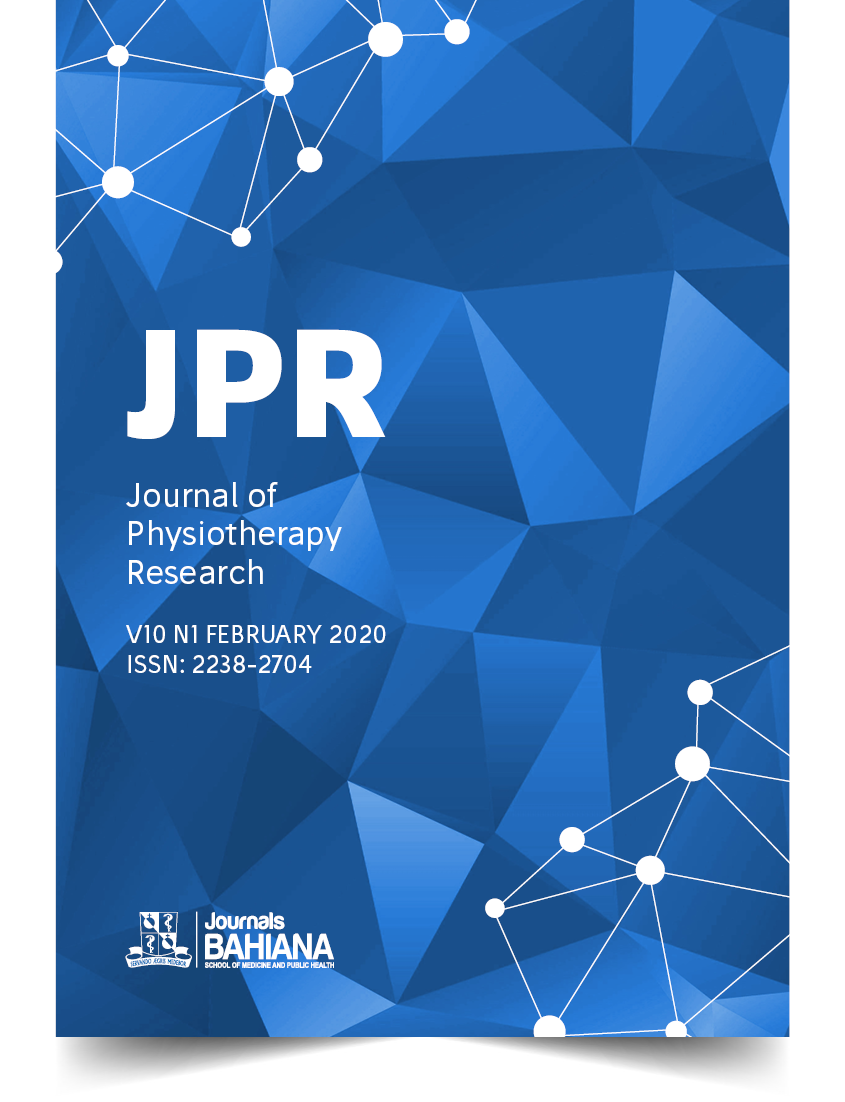Association between peripheral muscle force and muscular respiratory strength in hospitalized elderly
DOI:
https://doi.org/10.17267/2238-2704rpf.v10i1.2629Keywords:
Breathing. Elderly. Muscle strength.Abstract
INTRODUCTION: Sarcopenia is a syndrome characterized by the progressive and widespread loss of skeletal muscle mass and strength, which can be used as a life-threatening respiratory massage, such as decline in function, poor quality of life, and death. The risk of respiratory and control complications in the elderly population is one that may be due to a change in the strength of the diaphragm. OBJECTIVE: To assess the association between peripheral muscle strength and respiratory muscle strength in hospitalized elderly. METHODS: this is a study carried out in a public hospital in Salvador, Bahia. The primary variables measured were anthropometric measurements, palmar grip strength, respiratory muscle strength through maximal inspiratory pressure (MIP), gait velocity and presence of smoking. The secondary variables extracted from medical records were age, gender, admission medical diagnosis, admission clinical profile (clinical or surgical), length of hospital stay at time of collection and Charlson comorbidities index. The Pearson correlation analysis was used to evaluate the PPF variables and respiratory muscle strength. RESULTS: Of the 95 elderly patients evaluated, 73.7% were male, 89.5% were hospitalized for surgical reasons (40.2% were abdominal surgeries, 30.4% were urological surgeries, 16.3% were amputations, 13.1% were other surgeries ), BMI 24.5 ± 4.1 kg / m2. The mean age was 68.1 ± 6.1 years, palmar grip strength 31.3 ± 9.1 Kgf and PImax -77.5 ± 33.2 cm H2O. The time for initial evaluation was 4.3 ± 3.1 days after hospital admission. The Charlson comorbidities index was 3.6 ± 1.89 and the mini-mental status score was 22.9 ± 7.22. The correlation between palmar grip strength and respiratory muscle strength was moderate (R = -0.439 and p = 0.001). CONCLUSION: There is a relationship between FMR and FMP, and FMR can predict dynapenia. Despite this, it is recommended that the evaluation of FMR and FMP be made in an individualized way for a subsequent direction of the therapeutic plan, since this relationship was only moderate.Downloads
Download data is not yet available.
Downloads
Published
02/17/2020
Issue
Section
Original Articles
How to Cite
1.
Botelho PM, Rios LF, Maia M de S, Luz MRM de S, Junior MCMS, de Jesus SLF, et al. Association between peripheral muscle force and muscular respiratory strength in hospitalized elderly. Rev Pesq Fisio [Internet]. 2020 Feb. 17 [cited 2024 Nov. 25];10(1):43-9. Available from: https://www5.bahiana.edu.br/index.php/fisioterapia/article/view/2629



